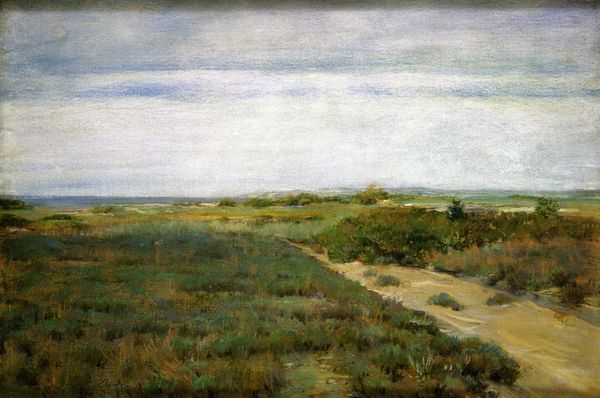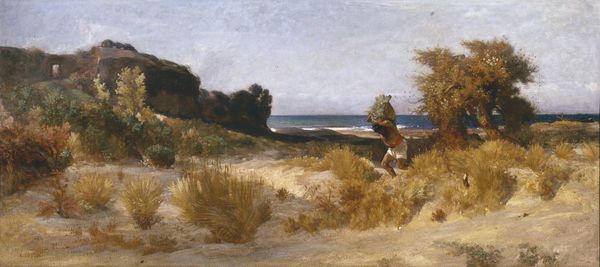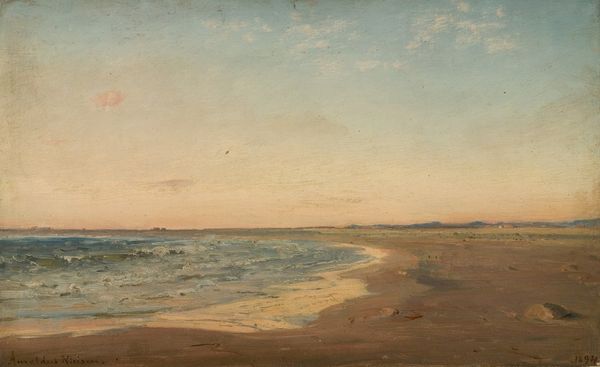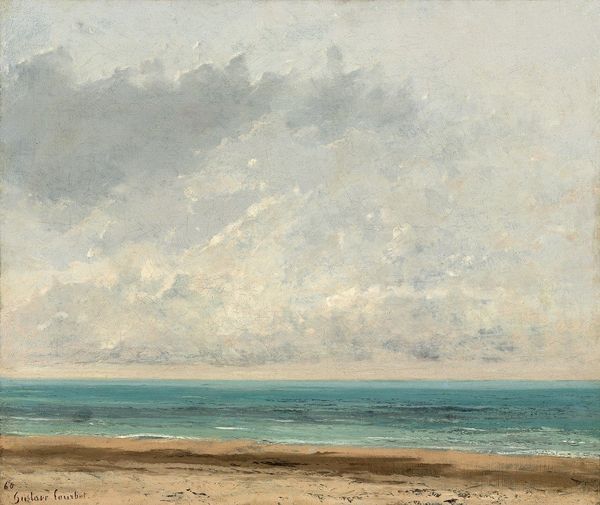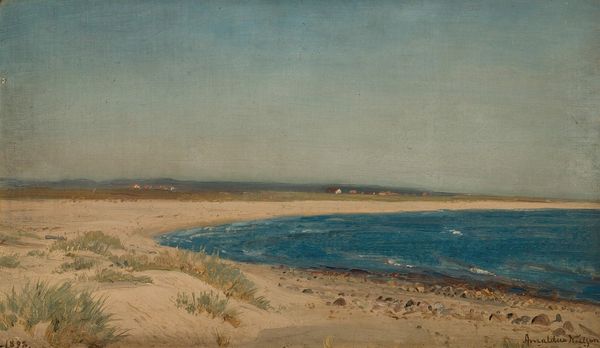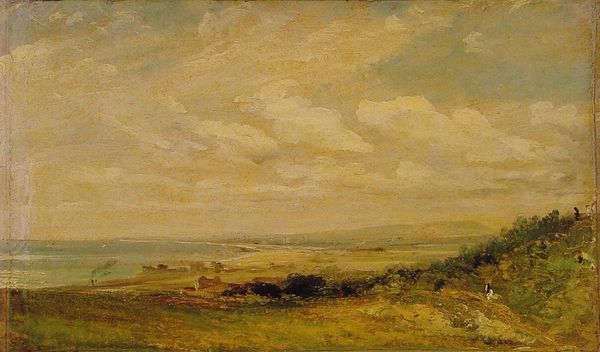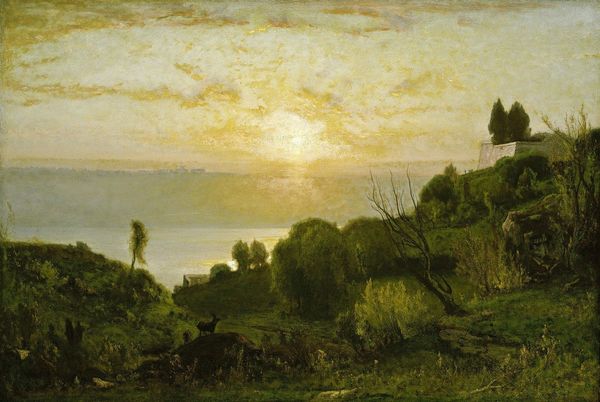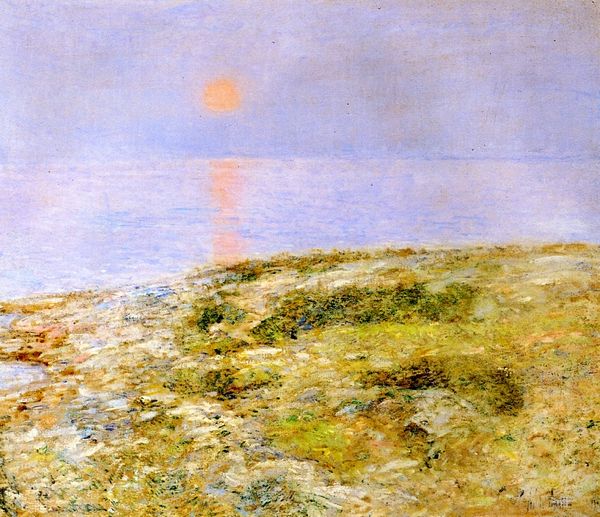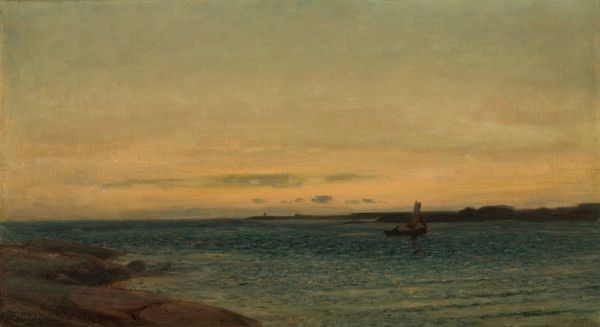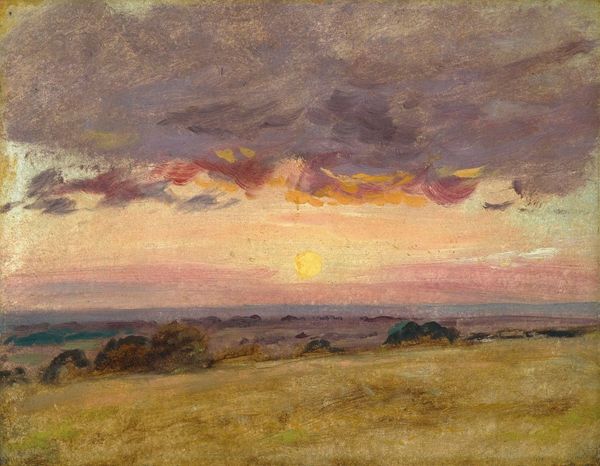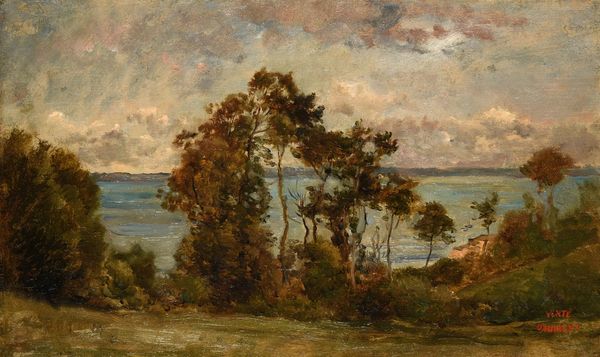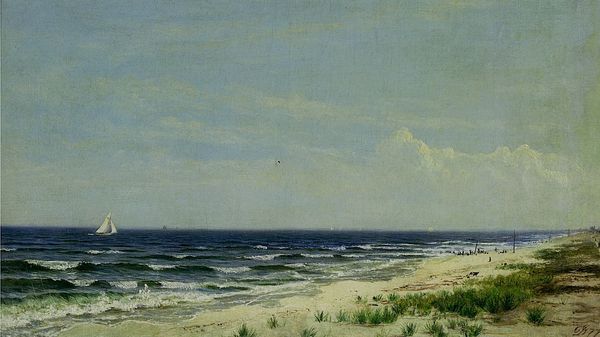
Dimensions: 62 x 95 cm
Copyright: Public domain
Editor: So, here we have "At the end of the moon on the Mediterranean Sea," painted by Giovanni Costa around 1900, oil on canvas. The muted colors create this overwhelming feeling of serenity, almost melancholic. What do you see in this piece? Curator: That melancholy, I think, speaks to a larger historical context. Consider the rise of industrialization at the turn of the century. Costa, aligning with the Macchiaioli and later promoting "In Arte Libertas," sought refuge in the landscape. How does this painting, with its soft edges and fading light, function as a rejection of the encroaching urban landscape and its attendant social ills? Editor: So, the beauty is a form of resistance? Curator: Precisely! The choice of the Mediterranean, too, isn’t accidental. It's a cradle of civilization, representing a cultural heritage threatened by rapid modernization. The way the moon hangs low suggests not just a time of day, but perhaps the end of an era. Does that resonance of loss impact your perception of the “serenity” you mentioned? Editor: Absolutely, it shifts my perspective. I was initially drawn to the peace, but now I see a deeper layer of social commentary. The loneliness of the scene feels deliberate. Curator: Exactly! It’s not just pretty; it's potent. Art historical understanding layered with contemporary theory brings to the foreground considerations around environmental degradation and the search for cultural roots. So, what have we discovered? Editor: That landscape paintings aren't just landscapes; they are often loaded with historical and political commentary! Thanks for opening my eyes! Curator: Likewise! Seeing art through new eyes can lead to revolutionary ideas!
Comments
No comments
Be the first to comment and join the conversation on the ultimate creative platform.
